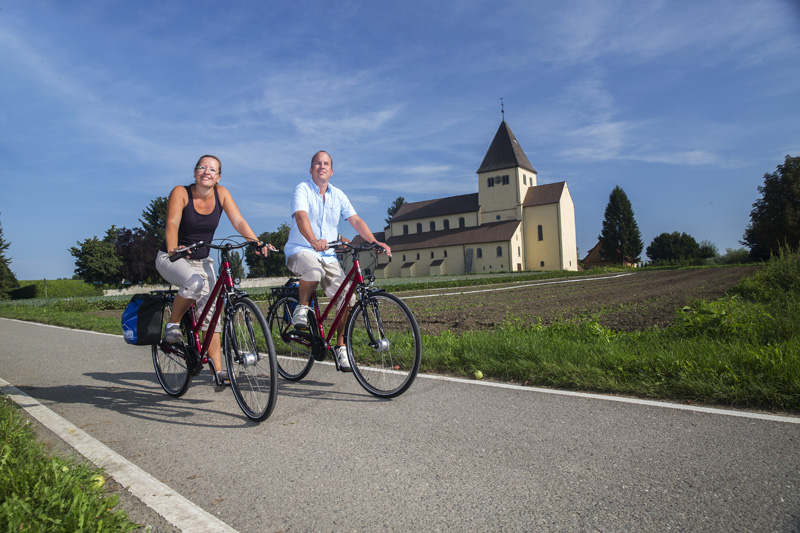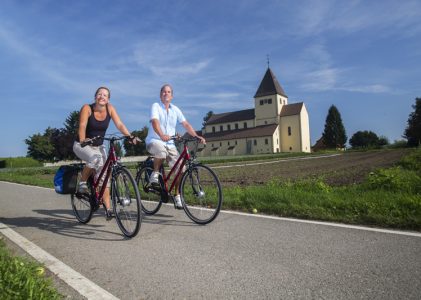Even before the island of Reichenau was declared a UNESCO World Heritage Site in 2000, it was one of the most popular holiday regions on Lake Constance. Not only the unique ensemble of the three medieval churches was awarded, but also the symbiosis of culture, nature and agricultural use. For example, the Wollmatinger Ried between the island and the Seerhein is one of the largest nature reserves in Germany and serves as a resting and nesting place for thousands of birds from all over Europe. The number one attraction are the three Romanesque churches of St. Georg, St. Maria and Markus as well as St. Peter and Paul. They testify to a cultural, religious and political heyday in the West. The monastery culture of Reichenau was widely famous for its library. It became one of the most important of its time at the beginning of the 9th century. The former monastery church of St. Maria and Markus was consecrated as early as 816. Particularly striking in the three-aisled basilica are the huge roof structure, which is modeled on an inverted ship's hull, and the rich treasury that can be visited on guided tours. St. Peter and Paul in Niederzell was completed in the 12th century. However, their origins go back to the 8th century. The most visited church on the island is St. George. The small church in Oberzell was built around the year 888 and has remained almost unchanged to this day. It became famous for its Ottonian wall paintings from the 10th century. It was not until the 14th century that the well-known fresco of women chattering that doesn't fit on a cow's skin was created. It shows four devils spreading a large animal file and trying in vain to banish "the chatter" of two women on it.
Official representation of the Lake Constance cycling path


